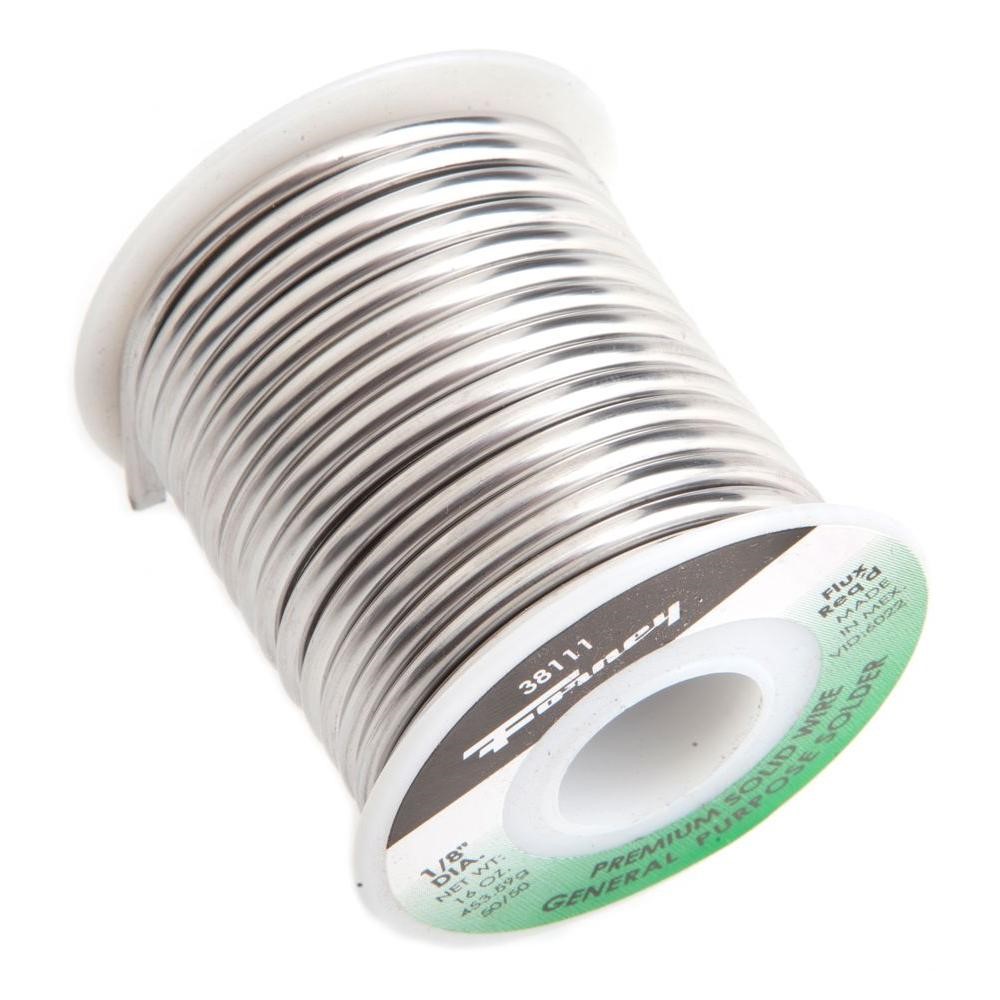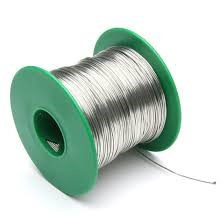Soldering for Electronics – Tips
Electronic Lead Solder Wire is also called tin, and is composed of two basic components, tin and lead. But currently, lead is not good to use due to its harmful effects, we will see that later.
- Soldering for electronics
- Welding wire for electronics
There are several types of solder. The most common in the use of electronics is the solder of wire with flux, of 60/40 thickness of 1mm. But what does 60/40 mean?

Weld Lead Solder Wire metal alloy
Metal alloys come by the proportions of tin and lead, for example, to say that the solder is 60/40. It means to say that there is 60% tin and 40% lead. Welds in the proportions 70/30, and 40/60 are commonly found on the market.
The alloy depends a lot on the use. Hence, we take into account that the more tin the alloy has, the lower the melting point will be. So a 70/30 alloy weld will melt much faster than a 40/60 alloy weld.
Desoldering Bars
One example is the desoldering bar that comes in Lead Solder Wire kits. These bars have an alloy with a lot of tin and for this reason it has a very low melting point. When mixed the common weld causes its melting point to decrease significantly. Moreover, it facilitates the removal of the component and cleaning of the place.
Flux Lead Solder Wire
In electronics, welds come with internal flux, they are hollow and this hollow is filled with flux. The flux helps the welding and improves the adhesion of the weld to the surface. Below we will talk about this in more detail.
SMD solder
The only thing that differs from normal soldering for soldering SMD components is the thickness of the solder wire. On the market several thicknesses are available, the most common is 1mm, for SMD the .5mm solder wire is widely used.
What Lead Solder Wire to buy?
To start, let's go with what we cannot miss. As we mentioned above, the Lead Solder Wire with a 1.0mm thick flux and (60/40) alloy. I always used only this solder, even for SMD, a nice tip to use this solder in SMD is to stretch the wire. Hence, it is very malleable and when stretching it almost reaches .5mm.
Flow and Paste for Welding
Welding Flow
The solder flux and paste serve to facilitate the adhesion of the weld to a surface. Furthermore, it cleans and improves the surfaces to be welded. Many metals do not match, but if you use the solder paste or flux the tin and lead will stick to the metal more easily.
Solder Paste
Often, even if the solder has an internal flux, it is advisable to use the flux or paste to further improve adhesion and facilitate soldering. The difference between the solder flux and the solder paste is that the flux is recommended for use in electronic components. Since the solder paste is ideal for chassis, plates, metal insulators and places where there are large surfaces to be welded.
One of the best flows is the Lead Solder Wire base. It is a mineral resin obtained as a by-product of petroleum distillation.
Lead Free - Lead-free solder
Currently, laws, especially in the European Union, are abolishing the use of lead in electronics, with the emergence of Lead-Free solder, a lead-free solder. We all know the harmful effects of lead on our health and the environment.
And that law came to clean and prevent contamination due to lead. Even here in Europe, where it is still allowed to use lead solders, there are already some Lead Free solder options. The available and most used metal alloys are the alloys that have in their composition:
- Silver (Ag)
- Tin (Sn) and
- Copper (Cu)
The proportion varies according to each manufacturer. In general the tin is part of at least 95% of Lead Free solder metal alloy.
Health Care when using Solder wire
Although it does not pose any health risks, you are in contact with metals and other substances, especially those that form the flow. I recommend not using Lead Solder Wire of doubtful. There are no guarantees that these products have raw materials free of toxic substances.
If you think of working hours soldering or unsoldering consider buying an exhaust fan for welding, there are several brands on the market. All are very efficient, they are provided with an activated carbon filter that eliminates any smoke during work.

How to avoid risk in lead Solder Wire?
You do not need to wear gloves, masks, goggles or a helmet to make a weld, solder or resolder on the electronics. But some tips can help to avoid risks during and after this work with the weld.
1 - When using the solder, do not bring your face close to the point to be welded. Small bubbles of solder or even flux may occur that when they burst, they release solder and hot flux.
2 - When working with the solder, avoid scratching your eyes, putting your finger in your mouth or even eating while handling the solder. This can cause contamination.
3- Avoid inhaling the smoke produced during the melting of the weld. It comes from the resin flow, although it is not toxic, it is safe to avoid.
4 -After handling the Lead Solder Wire, wash your hands.
Do not buy soldering iron with too high or too low a power, exposure to heat during soldering can damage some components and even loosen tracks on the printed circuit board. But low temperature makes work difficult. A soldering iron of 30 Watts or 40 Watts is ideal to start, choose the ceramic resistance ones. This avoids many problems with static.
Advantage of Lead Solder Wire
The main advantages of this soldering iron are its easy use, easy maintenance and low price.
Disadvantage
- Its power is fixed.
Pistol-type soldering iron
This was my first soldering iron, the pistol type for many years was the most used soldering iron, its operation is simple. A transformer converts the voltage of the AC home network into a lower voltage, as the secondary winding of the transformer has only a few turns. The transformer is capable of producing a low voltage only with a very high current.
Pistol-type soldering iron
Advantage
Pistol-type lead Solder Wire irons need a short heating time and are easily switched on and off in a very short time. Hence, this makes work easier and saves energy.
Disadvantage
Very heavy iron, it has great heating power to be used in thin printed circuit boards and can generate high electrical fields. It should not be used in some more sensitive components. Recommended for intermediate users only.
Conclusion
It is not worth saving when buying solder, a roll of 500g solder wire with a flow of 60/40 x 1mm costs an average of R $ 30. And will give you to solder for a few years. But if you want to start on the ecological wave and buy a lead-free solder roll with a 1mm Lead-free flux.




